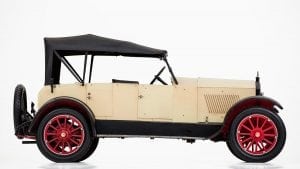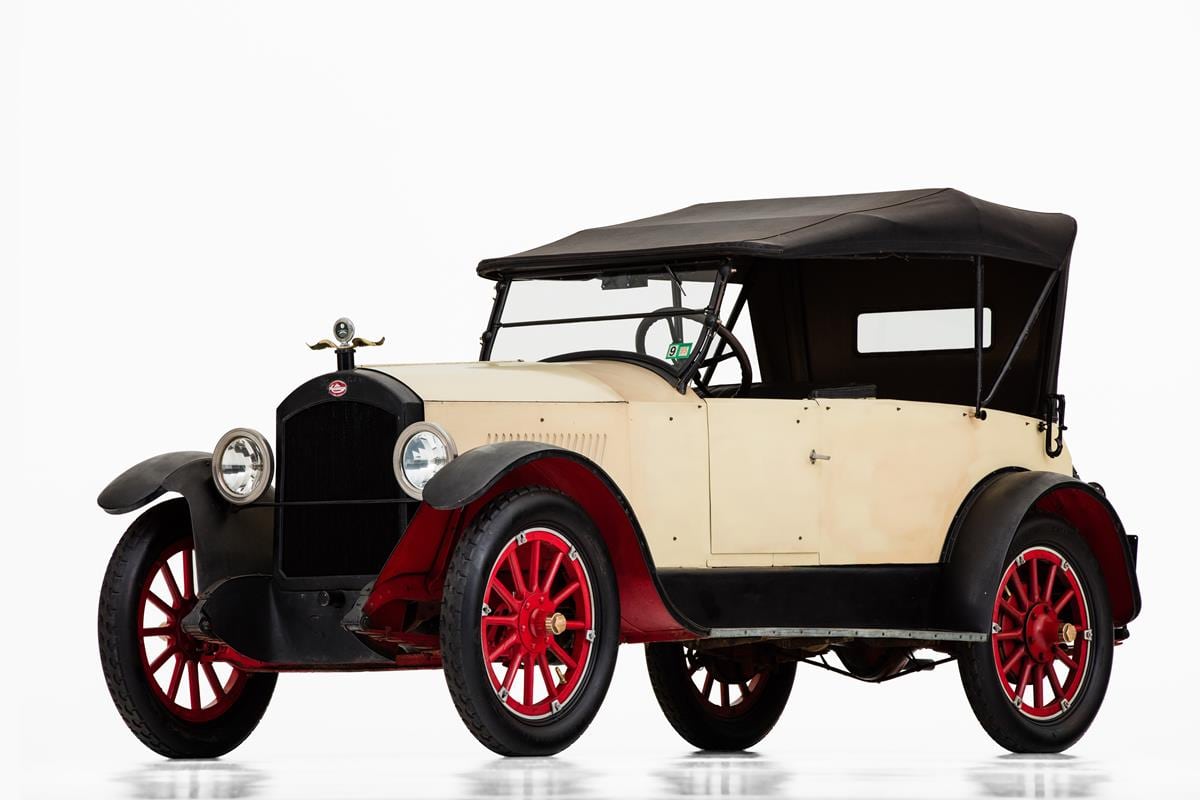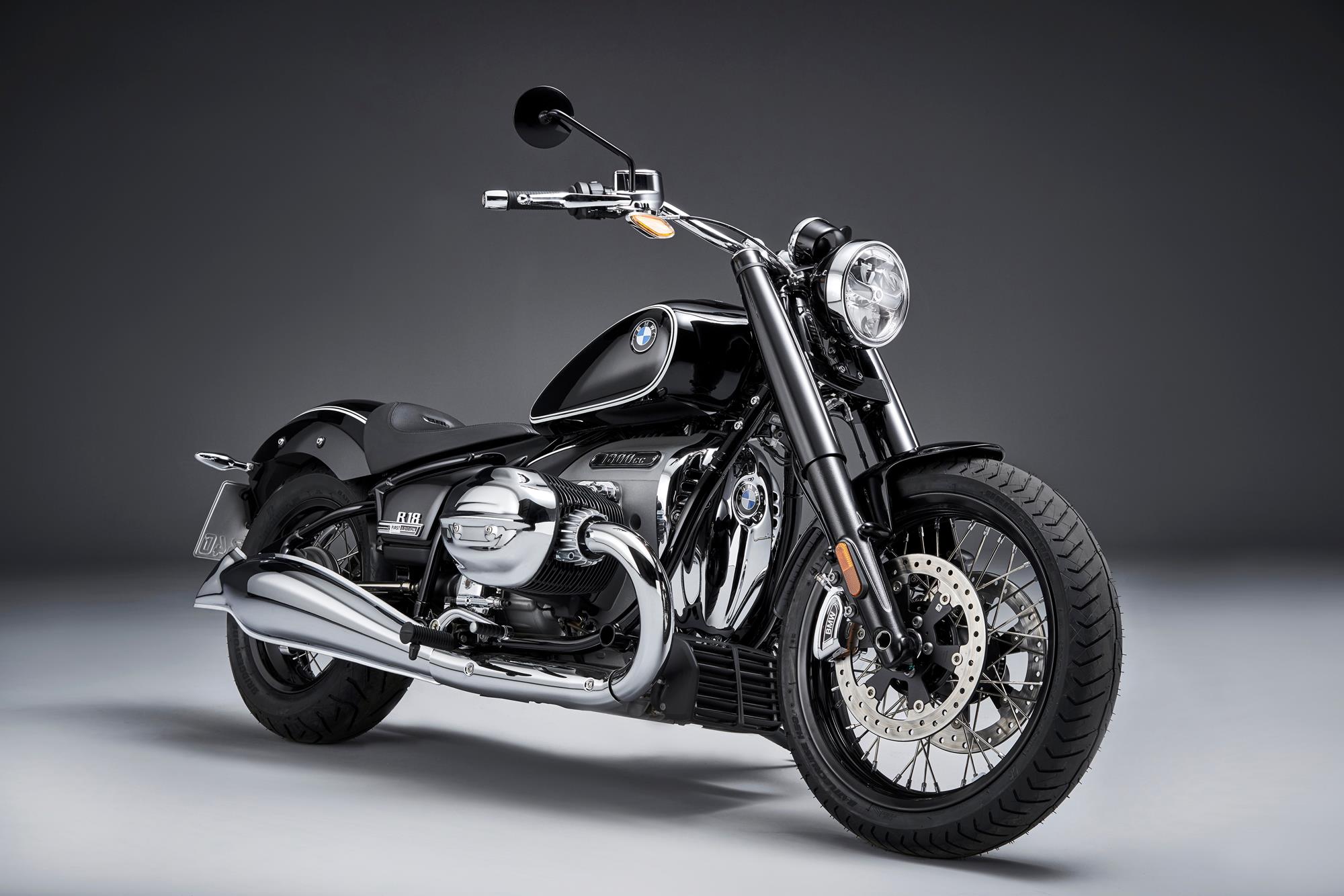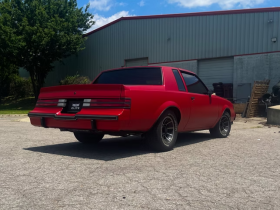Students from the College of Charleston worked with the Historic Vehicle Association (HVA) to add the 1920 Anderson Six Convertible Roadster to the National Historic Vehicle Register in celebration of 100 years of the automotive industry in South Carolina (1916 – 2016). The 1920 Anderson is one of only seven known survivors of South Carolina’s first automobile company that operated between 1916 and 1922. The 1920 Anderson is the first automobile to be added to the National Historic Vehicle Register for its local and regional historic significance.
The students are enrolled in the American Automotive History and Documentation course which was launched in September by the College of Charleston’s Historic Preservation and Community Planning department. The course was made possible through a partnership with the Historic Vehicle Association and is believed to be the first automotive heritage documentation course to be offered in the United States.

The students documented the 1920 Anderson using the guidelines set by the Secretary of the Interior’s Standards for Heritage Documentation, the Historic American Engineering Record (HAER) and the National Historic Vehicle Register. The documentation included photography completed at the HVA National Laboratory, line drawings and historic narrative. The student’s documentation will become part of the permanent archives of the U.S. Library of Congress.
The 1920 Anderson is owned by Paul and Kathleen Ianuario of Duncan, South Carolina. They were joined by Mr. Walter and Jane Hardin at this year’s 15th annual Hilton Head Island Motoring Festival & Concours d’Elegance for the 1920 Anderson’s official recognition on the National Historic Vehicle Register. Mr. Hardin is the great-grandson of John Gary Anderson the founder of the Anderson Motor Company. The College of Charleston students were on-hand for the event through the support of Harvey Geiger and Driving Young America.
“The recognition of the 1920 Anderson automobile represents an important aspect of the National Historic Vehicle Register – the recording and celebration of vehicles that are significant to our nation’s local and regional histories,” said Mark Gessler, President of HVA. “One hundred years of automotive industry in South Carolina is a significant milestone and we are grateful for the partnership with the College of Charleston and students that documented the 1920 Anderson automobile as an important part of our nation’s heritage.”
The 1920 Anderson Six Convertible Roadster joins other National Historic Vehicle Register automobiles such as the 1964 Shelby Cobra Daytona Coupe prototype, President Reagan’s Willy’s ‘Jeep’ CJ-6, the first presidential limousine a 1909 White Stream Car, the Buick Y-Job and Marmon Wasp winner of the first Indianapolis 500.
From 1916 to 1925, a total of approximately 5,500 Anderson cars were produced in Rock Hill, SC, in direct competition with offerings from the North. Featuring the motto, “A little bit higher in price, but made in Dixie,” Anderson cars were indeed the South’s luxurious alternative to Detroit’s mass market vehicles, featuring mahogany, South Carolina hickory, premium leather and other top-quality trim and materials. The cars also introduced interesting color schemes to the automotive industry, tempting buyers with the rich palette of purple, blue, yellow, and other alternatives to the more basic color schemes of Northern competitors.
 John Gary Anderson, the industrialist and inventor behind the company was also a poet and sculptor. His cars featured numerous innovations, including an electric windshield wiper years before Ford offered the technology. Other firsts included power convertible tops, a floor-installed headlight dimmer switch (which he invented), and a unique review mirror. There was also an onboard air compressor driven by the car’s transmission for pumping up tires and a tool kit integrated into the side door for on-the-go repairs. The radiator cap featured a thermometer known as a “motor meter”, that was visible to the driver. However, customers paid a price for all this innovation and luxury, with an Anderson ranging in cost from $1,650 for the five-passenger touring car to $2,550 for the sedan, compared to a $345 to $760 price range for the contemporary Model T Ford.
John Gary Anderson, the industrialist and inventor behind the company was also a poet and sculptor. His cars featured numerous innovations, including an electric windshield wiper years before Ford offered the technology. Other firsts included power convertible tops, a floor-installed headlight dimmer switch (which he invented), and a unique review mirror. There was also an onboard air compressor driven by the car’s transmission for pumping up tires and a tool kit integrated into the side door for on-the-go repairs. The radiator cap featured a thermometer known as a “motor meter”, that was visible to the driver. However, customers paid a price for all this innovation and luxury, with an Anderson ranging in cost from $1,650 for the five-passenger touring car to $2,550 for the sedan, compared to a $345 to $760 price range for the contemporary Model T Ford.
“I’m delighted to have our 1920 Anderson Convertible Roadster recognized as a historically significant automobile,” said owner, Paul Ianuario. “I searched for this car for over twenty-three years and I’m pleased to be able to share this important example of South Carolina automotive history with the nation.”
About the 1920 Anderson Six Convertible Roadster
The 1920 Anderson Six Convertible Roadster is remarkably well preserved and is the only known surviving example of one of the marque’s most innovative body types. The Convertible Roadster design is another of the notable innovations of the Anderson company and John Gary Anderson. Based on a US Patent granted in 1916, the body style allowed for a car to quickly “convert” from a sleek roadster to a five-passenger touring car, similar to the commonplace hide away rumble seats that were to appear in roadster and coupe designs later on. The Convertible Roadster was first offered for the 1919 model year and remained in the lineup until 1922.
 This particular example, car number 34142, has never undergone a complete restoration and represents the original imprint of its manufacturer and the craftsmen who built it. Furthermore, its original, numbers matching, aluminum block, six-cylinder Continental 7-R engine and running gear operate as they did when the car drove off of the assembly line in South Carolina circa 1920.
This particular example, car number 34142, has never undergone a complete restoration and represents the original imprint of its manufacturer and the craftsmen who built it. Furthermore, its original, numbers matching, aluminum block, six-cylinder Continental 7-R engine and running gear operate as they did when the car drove off of the assembly line in South Carolina circa 1920.
Ironically, a lumberjack supply salesman in Portland, OR, is believed to be the first owner of this notable Southern car. The “accessory” tow hitch is thought to have been used by the original owner to pull a camper between logging camps as he peddled his wares. After its use in the Pacific Northwest, the car cycled through a number of sympathetic owners and collectors on the West Coast before Mr. Ianaurio was able to acquire the Convertible Roadster and bring it back to its home state in 1989.
The 1920 Anderson Six Convertible Roadster has been documented at the HVA National Laboratory in Allentown, Pennsylvania. The laboratory is a pristine, purpose-built, state-of-the art facility for automotive photography, photogrammetry, 3D scanning, videography and the HVA’s growing physical and digital archives. The laboratory was built to standardize and streamline the expansion of the National Historic Vehicle Register program.
The laboratory environment includes a large 40 ft. x 40 ft. white room with infinity walls on all sides and turntable integrated into the floor to precisely rotate historic automobiles for technical photography. The laboratory is believed to be the only facility of its kind in the world. The work done here will provide current and future generations a highly detailed, accurate and consistent record of some of the Nation’s most significant automotive treasures.
The design, development, construction and ongoing maintenance of the HVA National Laboratory has been underwritten through the generous support of the NB Center for American Automotive Heritage. The documentation of the 1920 Anderson on the National Historic Vehicle Register is being organized by the Historic Vehicle Association and the College of Charleston and underwritten by Hagerty and Shell (including their Pennzoil and Quaker State brands).
Involvement of the College of Charleston’s Historic Preservation and Community Planning Program
Students at the College of Charleston’s Historic Preservation and Community Planning program conducted the research and report work for the 1920 Anderson Six Convertible Roadster in a special class titled American Automotive History and Documentation. The students used primary source records from archives in Charleston, Columbia, and Rock Hill, SC, including materials from the Anderson Motor Company and historic South Carolina County Motor Vehicles Registration records from the 1900s-1920s. Valuable information was also provided by the car’s current owner, Paul Ianuario, on his specific car’s provenance. With these historical materials the students created a database on early twentieth-century automobile ownership in South Carolina to better understand how cars played an important role in the state’s history. Further investigation on Ancestry.com for owners of Andersons provided additional information on those people who owned and used these cars. Both at the HVA Laboratory in Allentown, PA, and at a local park in Charleston, SC, the students also conducted a detailed photographic study of Ianuario’s car to better understand the vehicle’s South Carolina-made materials and engineering components. Scaled measured drawings – similar to what is done for historic buildings – were also made of the car. The Historic Preservation and Community Planning program envisions this class as the first in an expanding curriculum that will include historic motor vehicles in addition to buildings, landscapes and other aspects of material culture heritage.
About the Historic Vehicle Association
The HVA is dedicated to preserving and sharing America’s automotive heritage. In 2014, the HVA established the National Historic Vehicle Register. Working with the U.S. Dept. of the Interior, Heritage Documentation Programs and Library of Congress, their aim is to document historically significant automobiles in America’s past. The HVA is supported by over 400,000 individual historic vehicle owners, key stakeholders and corporations such as Shell (including their Pennzoil and Quaker State brands), Hagerty, American Fuel and Petrochemical Manufacturers, as well as individual benefactors. Please visit: historicvehicle.org


















